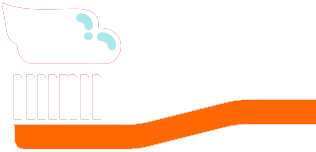Underbite Correction Methods
To correct an underbite, you and your dental professional have a few great options. The correction method chosen depends on factors such as the extent of the underbite and you or your child's age. In fact, you can begin correcting a child's underbite as early as possible so your dental professional can more easily manipulate their bones and palate.
Some overbites might require only one of the following correction methods or a combination of methods.
Braces: Whether metal, clear, or "hidden," braces are the most common way to align your bite. Though you or your teenager might need to wear braces for two to three years – and a retainer after the braces come off – this is probably the least expensive, most effective way to fix your underbite.
Reverse-Pull Face Mask: Resembling braces headgear, this mask is designed for children around 10 and younger before their bones fuse. It wraps around a child's head and pulls the upper jaw back into the correct position using metal bands fastened to the upper back teeth. A chin cup typically helps keep the mask in place.
This mask option is highly effective as long as your child wears it as frequently as possible, particularly while sleeping and at home.
Upper Jaw Expander: Your orthodontist will fit this wire-frame device across your palate. Every night, you'll use a special key to widen the expander a tiny amount. The process gradually causes the upper jaw to widen until the lower teeth no longer close against the outside of the uppers.
You'll usually wear the expander for about a year and then replace it with a retainer to promote proper bone growth. Though effective for teens and adults, the expander can work most efficiently in children whose bones are still forming.
Tooth Extraction: If you have too many lower teeth, causing them to protrude, you might fix your underbite by having the extra teeth pulled. This can be a one-off procedure or done in conjunction with other methods.
Surgery: If your underbite is due to your jaw sticking out much further than normal, your dental or medical professional might prescribe one of these surgeries:
- Orthognathic Jaw Surgery: This correction surgery requires moving your lower jawbone to fix your protruding jaw. In this process, your oral and maxillofacial surgeon separates the bone in the jaw's rear part from the front part and then modifies it. This enables the part of the jaw carrying the lower teeth to be repositioned further back.
This can be an outpatient surgery or require brief hospitalization. Though complete healing might take 9 to 12 months, you can go back to school or work after one to three weeks.
- Le Fort III Osteotomy: An oral and maxillofacial surgeon moves a person's entire face forward in this procedure. Performed when a person's face appears to have sunk in above the lower jaw, this surgery can greatly modify a person's appearance and functionality. Typical surgery healing times apply.
Cosmetic Approach: In mild cases, non-surgical cosmetic dentistry can reshape the lower teeth and then fit veneers to the uppers. Though it doesn't fix the underbite, it makes it less visible and sufficiently improves the jaw's functionality.
Bite alignment is seldom perfect, especially at a young age, but treatments are available to get your teeth perfectly positioned. Talk the treatments over with your dental and medical professionals. Whether correcting your bite or your jaw placement, you deserve to be fully able to eat, speak, sleep, and smile.








